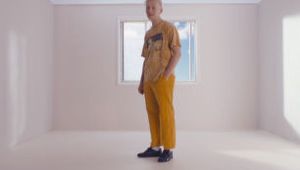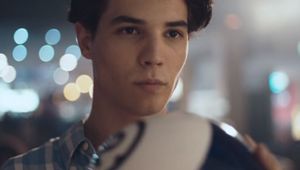
Filmmaking in the Life-or-Death World of the NHS

"You can’t film right now, someone has just died".
It’s not often you find yourself filming in a life and death environment. When you do, it reminds you of what’s really important.
We’re not in a war zone, but standing outside the Coronary Care Unit at Ashford Hospital in Kent. We’re shooting a recruitment ad for the NHS. The staff inside the unit are saving lives. Or, in this particular case, dealing with the fallout of a fatal heart attack. We are kindly asked not to enter.
After almost three days of rapid-fire intrusions into every area of the hospital’s operation, there is nothing we can do but stand and wait. We’ve been filming simultaneously, in multiple locations and haven’t stopped. And this sudden pause seems out of kilter with the fast-in, fast-out process we’ve become used to. It’s a busy hospital and they don’t have the time, space or the manpower to accommodate film crews. So when we are given access, we have to be quick, discreet and focused on what we need. However, this unexpected pause isn’t about any of these things. It’s about death and what the staff need now is calm and a few moments to do what’s necessary. We recognise this and remain in the corridor, quietly suppressing the urge to rush off and film something else. We are working to a manic schedule, with limited resources and are acutely aware that valuable shooting time is being lost. Sadly, on the other side of the door something far more valuable has been lost.
However, every shot does count, especially on this project, as finding good material is proving difficult. The ad is to promote IT and Support jobs within the NHS. Neither are particularly dynamic roles nor visually interesting. But this ‘hidden army’, as everyone is calling them, plays a pivotal part in the organisation and, like doctors and nurses, the NHS are in desperate need of them.
So, we’ve been scouring hospitals and GP surgeries across Southern England to find these individuals and film them doing exciting things. No easy task, and predictably, we’ve encountered hundreds of people just sitting at computers. We expected this in IT departments but now support departments look the same, as everything has become digital. So, no paper files being handed out by smiling faces, no outstretched arms retrieving records from high shelves, no thumbing through documents, no messages scrawled, no tongues on envelopes, no ticks on forms, no annotating patient notes, no ripping, no shredding or screwing up pages and throwing them in the bin. Just endless eyes staring at screens. What to do?
Let’s ask them what they do when they’re not at their desks!
Well, three days later and here we are, having walked many miles, down hundreds of corridors, following this ‘hidden army’ and filming what they do. We’ve been everywhere, seen everything and found things to shoot in the strangest of places. IT and support staff, we discover, are critically involved in every aspect of hospital life.
It’s now the last shot, on the last day and we’re feeling tired, which is probably why we’re happy to wait outside the Coronary Care Unit doing nothing. The door suddenly opens and two of us are let in to film. We expect a lukewarm welcome, as we pass a bed with a body bag being carefully wheeled out. To our surprise, the medical team seems pleased to see us. They smile and say ‘hello’, as if nothing has happened, then they go back to work and we get the camera ready. No one pays attention to the empty bed space in the middle of the room.
We capture a simple moment of human connection, as a support worker waves ‘goodnight’ to a ward nurse. It brings the clinical and non-clinical worlds together in a single shot, one that reveals a shared closeness and obvious inter-dependence.
When I started on this project, I thought that those working in IT and support were somehow separate to the rest of the NHS and, in truth, less important than the clinicians. But it’s now clear that what they do is just as crucial and although their jobs are very different to the clinical staff, they share the same purpose. It’s what makes working in IT or support for the NHS so different to working for a corporation - they’re saving lives.
I look at the crew and think of the film we’re making in this life and death environment. It’s just a recruitment ad for the NHS, but maybe we’re helping to save lives too. It feels good.
Simon Ratigan is a director at HLA












